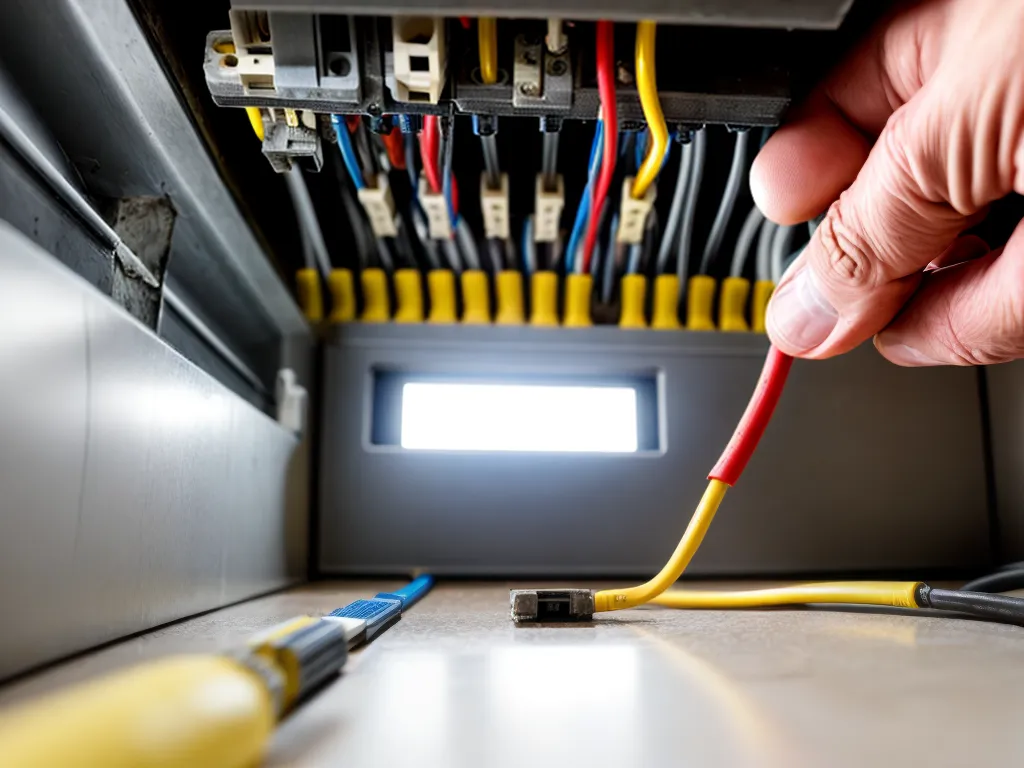
The National Electrical Code (NEC) lays out the legal requirements for safe electrical installations in the United States. The NEC is developed and published by the National Fire Protection Association (NFPA), a nonprofit organization devoted to eliminating death, injury, and property loss due to fire, electrical hazards, and related dangers.
The NEC is updated every 3 years through an open process allowing public input. The 2023 edition of the NEC is currently in development, with several major proposed changes around grounding requirements causing controversy and debate in the electrical industry. As an electrical engineer, I want to objectively evaluate these controversial proposals and their potential impacts.
Background on Equipment Grounding Requirements
The NEC contains requirements to connect exposed metal parts of electrical equipment to the equipment grounding conductor. This is an essential safety practice to prevent electric shock. If an internal short circuit occurs, the exposed metal parts could become energized and dangerous. Connecting those parts to ground with a low-impedance path causes the overcurrent protective device to quickly trip, removing the shock hazard.
The existing rules generally require a wired equipment grounding conductor to be run with the circuit conductors and connected to exposed metal parts. There are a few exceptions where alternative grounding methods like use of metal conduit or structural steel are allowed. But wired grounding conductors are the predominant method used today.
Controversial Proposal - Eliminate Equipment Grounding Conductor Requirements
One of the most radical proposals for the 2023 NEC is to completely eliminate the requirements for installing equipment grounding conductors in many cases.
Proponents argue that modern electrical equipment with double insulation or ground fault circuit interrupters (GFCIs) provide adequate shock protection without grounded metal enclosures. They say the existing rules are outdated and unnecessary in some applications.
However, this proposal is highly controversial. Here are some major concerns with removing equipment grounding conductor requirements:
-
Safety risk - Equipment can fail over time, leaving exposed metal parts energized without a grounding path. This poses electrocution hazards even with GFCIs or double insulation.
-
Equipment damage - Surges can cause catastrophic damage to sensitive electronics without a ground path to safely divert excess current.
-
Increased GFCI use - More widespread reliance on GFCIs increases nuisance tripping and maintenance costs.
-
Lightning vulnerability - Ungrounded structures are more vulnerable to lightning damage and fire.
-
Interoperability issues - Mixing grounded and ungrounded equipment on the same circuits may have unintended consequences.
Case Study: Residential Bathroom Circuits
One specific application proposed for ground conductor removal is residential bathroom branch circuits. The rationale is that required GFCI protection makes grounding redundant.
While this may save some installation costs, I do not believe the potential risks justify eliminating bathroom circuit grounding conductors. Wet locations like bathrooms have an inherently higher shock risk. GFCIs are susceptible to nuisance tripping from moisture. Removing wired ground connections would leave bathroom circuits more vulnerable to surges that can damage or destroy GFCI receptacles.
Controversial Proposal - Expand Use of Structural Steel Grounding
Another radical proposal would greatly expand the types of structures where using structural steel as a grounding electrode would be permitted.
Currently, the NEC only allows using structural steel as a grounding electrode in structures like commercial buildings and industrial plants where the steel framework is interconnected and well-bonded.
The proposal would now permit using structural steel in buildings like multi-family residences. Proponents argue this would eliminate the need to drive ground rods.
However, I and others have serious reservations about relying on structural steel for grounding more buildings:
-
Uncertain integrity - Structural steel in many buildings is not sufficiently interconnected or well-bonded to ensure a reliable, low-impedance ground path.
-
Lightning damage - Buildings grounded to structural steel remain vulnerable to lightning damage. Separate ground rods are better able to dissipate high surge currents.
-
Corrosion - Uncoated structural steel buried in concrete can corrode significantly over time, compromising its effectiveness as a grounding electrode.
-
Hidden faults - Faulty or corroded connections in structural steel grounding paths can be almost impossible to locate and repair.
-
Cost savings minimal - Material savings from avoiding ground rods is relatively small compared to overall building construction costs.
Case Study: High-Rise Condominium
I recently consulted on a new 17-story oceanfront condominium project. The electrical contractor proposed using the steel framework as the grounding electrode system rather than the specified ground rods. This was permitted by the inspector based on the proposed NEC changes.
Unfortunately, the building's ground potential rose over 60 volts after a lightning storm due to poor interconnections in the structural steel. This caused blown neutrals and significant equipment damage. If separate ground rods had been installed as intended per the original design, the surge could have been dissipated without issue. This case clearly demonstrates the risks of relying on building structural steel for grounding.
Balancing Safety, Costs, and Reliability
Updating the NEC's grounding requirements involves balancing safety, costs, and system reliability. While some proposed changes like removing certain equipment grounding conductors may provide minor cost savings, the risks appear to outweigh any benefits.
More significant changes like relying on structural steel grounding could seriously compromise safety and equipment resilience in my professional opinion. However, I am open to compelling evidence and rationale that I may have overlooked.
The NEC development process allows time for technical experts to thoroughly evaluate proposed code changes. I hope key problems with these grounding proposals will come to light. If not, I plan to advocate for maintaining conservative grounding requirements based on proven methods that have worked for many decades. Safety and reliability should remain the top priorities.
Some compromise through limited exceptions may be feasible. But broader acceptance of unproven methods could lead to preventable tragedies. NEC technical committees have a heavy responsibility to synthesize all stakeholder feedback and act in the best interest of public safety. I am hopeful the 2023 edition will take a prudent, cautious approach to any grounding-related code revisions.